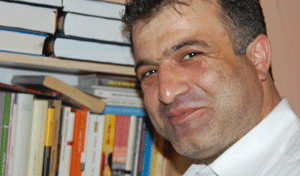Life in Vienna

Sinan Ertugrul.
By Sinan Ertuğrul* -
Vienna – Vienna is the capital of an old Empire and you realize this better while roaming the streets of the city. The Cathedral of St. Stephens, which is extensively mentioned in the Turkish traveler Evliya Celebi’s Book of Travels, is the symbol of the city. Just as it is a must for travelers to see Hagia Sophia in Istanbul and the Empire State Building in New York, it is a must to see the Cathedral of St. Stephens in Vienna.
The so-called Ring Avenue, which is a three-lane road surrounding the city, is actually the walls of the famous Vienna Fortress: the fortress which the Turks besieged twice but failed to conquer. The walls, which stood up until the 19th century, were later torn down to build the road.
What is left of the city walls is the entrance gate at Heroes Square. All significant and historical structures are on this ring avenue: The Museum of Natural History, the Museum of Fine Arts, the Austrian Parliament, the most beautiful City Hall in Europe and the Vienna Burg Theater. And a little farther away from the theater building is the oldest German-language University, that is, the University of Vienna.
The name of Vienna--whose history goes back to the Romans--is derived from Latin. The Romans establish a frontier post and call it Vindabona. The famous Roman Caesar Marcus Aurelius was born in Vienna.
Actually, Vienna acquired historical and political significance after the Siege of Vienna. While until the time of the first siege Vienna was an unimportant city in Central Europe where the Kaiser never came, its success during the siege made it gain importance. The city walls were repaired and renewed until the second siege and the city acquired the strongest walls of its time. Today in almost every corner of Vienna one comes across something associated with the Turks; it may be the name of a street or a cannon ball. The defense of Vienna is part and parcel of its identity..
Many long years after the Siege of Vienna, Turkish workers began streaming intp Austria in the 60’s and the 70’s, following an agreement signed with Turkey to provide the labor force required to reconstruct structures destroyed in the Second World War.The initial objective of these workers was to work for a couple of years, to save enough money to buy a cow or a tractor and go back home.
Unfortunately it did not turn out like that. My father was one of them; he looked like the modern migrant, arriving with only a single suitcase and a mattress. However, years went by, and he somehow could never return to his homeland. First he brought his family over, then split them up and sent half of them back home. Today approximately 220,000 Turks live in Austria. A large number of them were supposedly short-term laborers.
Now they are Austrians and most of them live in Vienna. They have representatives on the city council; some have developed into important businessmen and employers; some are faculty members at the university, others are physicians in hospitals, or lawyers; it is possible to find Austrian Turks in all kinds of professions. Your taxi driver in Vienna might be a Turk. They are now Austrians and are part of this country. It does not matter that they may be regarded as foreigners in Austria or as “emigrants” in Turkey. Now kebap is an Austrian national food, right next to Schnitzel. An Austria and Vienna without Turks is inconceivable.
* Sinan Ertuğrul is a graduate student in the Political Science Department of the University of Vienna. Ertuğrul, who has been living in Vienna since 1999, is the youngest child of a family who immigrated to Europe in 1963.
Last modified onSaturday, 06 May 2017 10:07
Tagged under
Latest from Admin TOA
- 300 migrants to be housed at shuttered Catholic church on Northwest Side in Chicago
- Turkish Stand-Up Sensation Hasan Can Kaya Embarks on U.S. Tour with Art Evi Production, in212 Production, and TAAS New York
- "Lean Startup, To Lean Company, To Rich Exit" by Dr. Kenan Sahin is released with Forbes Books
- LOSEV USA Ramadan Campaign Let the Children Heal First with Your Ramadan Donations
- Azerbaijan Society of America Honors Centennial Anniversary of the Great Azerbaijani Politician the National Leader of Azerbaijan President Heydar Aliyev
